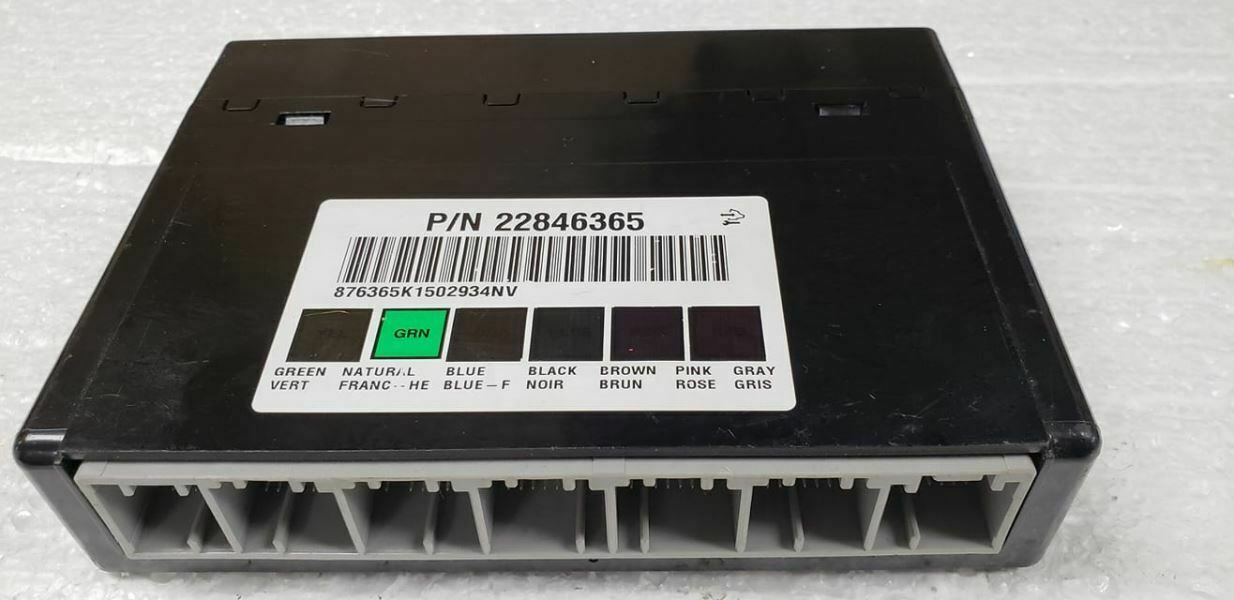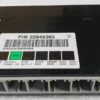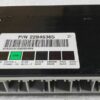Restore Your Truck’s Electrical System with Confidence
Are you battling frustrating electrical gremlins in your GM truck or SUV? Flickering lights, unresponsive power windows, a security system that acts on its own, or even a no-start condition can all point to one culprit: a failing Body Control Module (BCM). Don’t let these issues compromise your vehicle’s reliability and your peace of mind. This BCM is the definitive, hassle-free solution to get your vehicle back to 100% functionality, just as it was when it left the factory.
Common Symptoms & Your Solution
A faulty BCM can cause a cascade of confusing problems. If you’re experiencing any of the following, this part is your answer:
- Interior or exterior lights staying on, flickering, or not working at all.
- Power windows, locks, or mirrors operating intermittently or not at all.
- The security system engaging randomly or preventing the engine from starting.
- Erratic instrument cluster behavior or warning lights.
- Communication issues with diagnostic scan tools.
Instead of buying a used module that requires an expensive trip to the dealership for programming, our programmed 22846364 BCM arrives ready for installation. We use your vehicle’s VIN to flash the unit with the latest, most stable software from GM, ensuring seamless integration and optimal performance.
Features & Benefits
- ✔ Plug & Play Installation: This module is pre-programmed to your vehicle’s exact VIN. No dealership visit or special tools are required for programming, saving you hundreds of dollars and significant downtime.
- ✔ Updated GM Software: We flash each module with the newest updates from GM, which often include fixes for bugs and drivability issues present in the original software.
- ✔ Guaranteed Compatibility: This unit is a direct replacement for part numbers 22846364, 22737275, and 22846365, ensuring a perfect fit and function for a wide range of GM trucks and SUVs.
- ✔ No Core Charge: Keep your old part. There are no core charges or hassles with returning your original module, making the process simple and straightforward.
- ✔ Restore Full Functionality: Get your power accessories, lighting, and security systems working correctly again for a safer and more enjoyable driving experience.
- ✔ Peace of Mind: This unit is backed by our one-year replacement warranty.
Expert Insight: The Brain of Your Vehicle’s Body
Think of the BCM as the central nervous system for all your vehicle’s non-engine-related electronics. It manages everything from the chime that reminds you to put on your seatbelt to the complex logic that controls your power windows and anti-theft system. When it fails, the symptoms can seem random and unrelated. That’s why replacing it with a properly programmed 22846364 BCM is so critical. A module from a salvage yard might fit, but without being programmed to your specific VIN, it simply won’t work. It won’t recognize your vehicle’s options, key fobs, or security protocols. Our service eliminates that entire costly and complicated step, delivering a part that’s truly ready to solve your problem right out of the box.
Frequently Asked Questions
How does the VIN programming process work?
It’s simple. After you complete your purchase, you’ll need to send us your 17-digit Vehicle Identification Number (VIN). Our technicians will use this number to access the latest GM software specific to your vehicle’s build and options. We then flash this software onto the BCM before shipping it to you.
What is a BCM and what does it do?
The Body Control Module (BCM) is a computer in your vehicle that controls and monitors a wide variety of electronic accessories. This includes power windows, power mirrors, air conditioning, interior and exterior lighting, power locks, and the anti-theft system.
Do I need to perform any procedures after installation?
In some cases, yes. Depending on your specific model, a ‘Brake Pedal Position Relearn’ may be needed. Additionally, if your airbag light is on after installation, a professional scan tool is required to perform the ‘Setup SDM Primary Key in BCM’ procedure to sync the modules. These are standard procedures for this type of repair.
Is this the correct part for my truck/SUV?
This programmed 22846364 BCM fits a wide range of 2012-2014 GM vehicles, including the Escalade, Silverado, Sierra, Tahoe, Suburban, and Yukon. Please refer to the detailed fitment list in this listing to confirm compatibility with your specific year, make, and model.
Where is the BCM located on my vehicle?
On most of the compatible GM trucks and SUVs, the BCM is located under the driver’s side of the dashboard, near the steering column. Always disconnect the battery before attempting to remove or install any electronic modules.
What if I have questions during installation?
While we recommend professional installation, we are here to help. If you or your mechanic have questions, please contact us. It’s always best to consult a factory service manual for detailed, vehicle-specific instructions.


